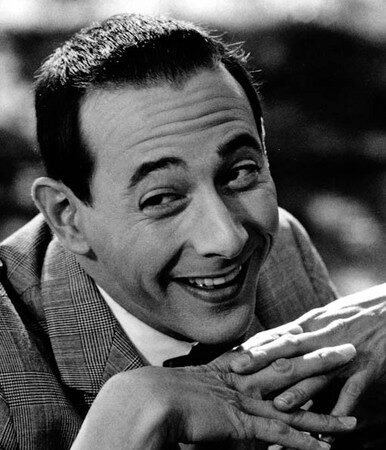A Brief History of the Entertainment Movie Industry

Entertainment Movie can include a wide range of genres, including action, comedy, show, science fiction, fantasy, sentiment, frightfulness, and numerous others, all aimed at giving amusement in different shapes. These movies frequently include locks in narrating, compelling characters, amazing visuals, and sound plans to submerge the group of onlookers within the cinematic involvement.
The entertainment movie industry encompasses a wealthy and captivating history that ranges over a century. The entertainment movie industry proceeds to advance, with modern advances, narrating procedures, and commerce models forming its future. It remains an effective drive in worldwide culture, impacting and reflecting societal patterns and values.
Overview of the key milestones and developments in the industry:
Early Beginnings (Late 19th Century)
The origins of the movie industry can be traced back to the late 19th century when inventors like Thomas Edison and the Lumière brothers made early movement picture cameras and projectors. The primary open screening of a movement picture was taken in Paris in 1895, stamping the birth of cinema.
Silent Era (Late 19th Century to 1920s)
During this period, movies were noiseless, and narrating depended intensely on visual symbolism and title cards. Quiet film stars like Charlie Chaplin and Buster Keaton picked up gigantic ubiquity.
The Introduction of Sound (Late 1920s)
The 1927 release of “The Jazz Singer” checked the move from noiseless movies to “talkies.” Sound innovation revolutionized the industry, and Hollywood became the center of worldwide filmmaking.
The Brilliant Age of Hollywood (1930s-1940s)
Hollywood studios, such as MGM, Warner Bros., and Foremost, delivered iconic movies and made the star system, turning performing artists like Clark Peak, Marilyn Monroe, and Humphrey Bogart into legends.
World War II and Hollywood (1940s)
The film industry played a significant part during World War II, creating publicity movies and boosting assurance. After the war, Hollywood experienced a post-war boom.
Tv Competes (1950s)
The rise of TV in the 1950s posed a challenge to the movie industry, driving advancements like widescreen groups (e.g., CinemaScope) and 3D motion pictures to bait audiences back to theaters.
New Hollywood and Free Film (1960s-1970s)
A wave of youthful filmmakers, including Francis Passage Coppola, Martin Scorsese, and Steven Spielberg, developed amid this period. They challenged the studio system and presented more innovative and offbeat narrating.
Blockbusters (1970s-1980s)
Movies like “Jaws” and “Star Wars” popularized the concept of the blockbuster, leading to the birth of the summer motion picture season. Studios started centering on big-budget, high-profit preparations.
Home Video (1980s)
The presentation of VHS and Betamax tapes permitted individuals to observe movies at home, revolutionizing distribution and making an unused income stream for the industry.
Digital Revolution (Late 20th Century – Early 21st Century)
The move from film to digital technology revolutionized generation, dissemination, and uncommon impacts. This time saw the rise of computer-generated symbolism (CGI) and 3D cinema.
Globalization (Late 20th Century – Present)
Hollywood movies picked up around the world, and universal markets, especially in Asia, got to be progressively vital. Blockbusters like “Avatar” and “Avengers: Endgame” set global box office records.
Streaming Services (2000s-Present)
The rise of streaming stages like Netflix, Amazon Prime, and Disney+ disturbed conventional dispersion models, making it simpler for free producers to reach worldwide audiences.
Diversity and Inclusion (21st Century)
The industry has faced developing examination with respect to issues of differences and representation, driving greater efforts to incorporate underrepresented voices in both on-screen and behind-the-scenes parts.
Pandemic Challenges (2020s)
The COVID-19 pandemic brought almost critical disturbances to the motion picture industry, leading to theater closures and delayed film discharges. Spilling administrations and elective dispersion strategies picked up prominence.
Frequently Asked Questions
Q1 – When was the first movie ever made?
The first open screening of a motion picture is often credited to the Lumière brothers, who appeared in their brief film “Specialists Taking off the Lumière Factory” in 1895.
Q2 – How has the film industry adapted to digital technology?
The film industry has embraced advanced technology for filmmaking and dissemination, including the use of CGI (Computer-Generated Symbolism) and computerized projection in theaters. Digital streaming administrations have also become major players in film conveyance.
Q3 – What recent developments have affected the entertainment movie industry?
Later developments include the rise of streaming platforms like Netflix and Amazon Prime, expanded efforts for differences and inclusivity in filmmaking, and the effect of COVID-19 on distribution methods.
Q4 – How can I stay updated on the most recent entertainment news and movie releases?
To stay updated, you’ll follow entertainment news websites, subscribe to movie-related magazines, or utilize streaming platforms and movie survey aggregators to find new releases and patterns.





